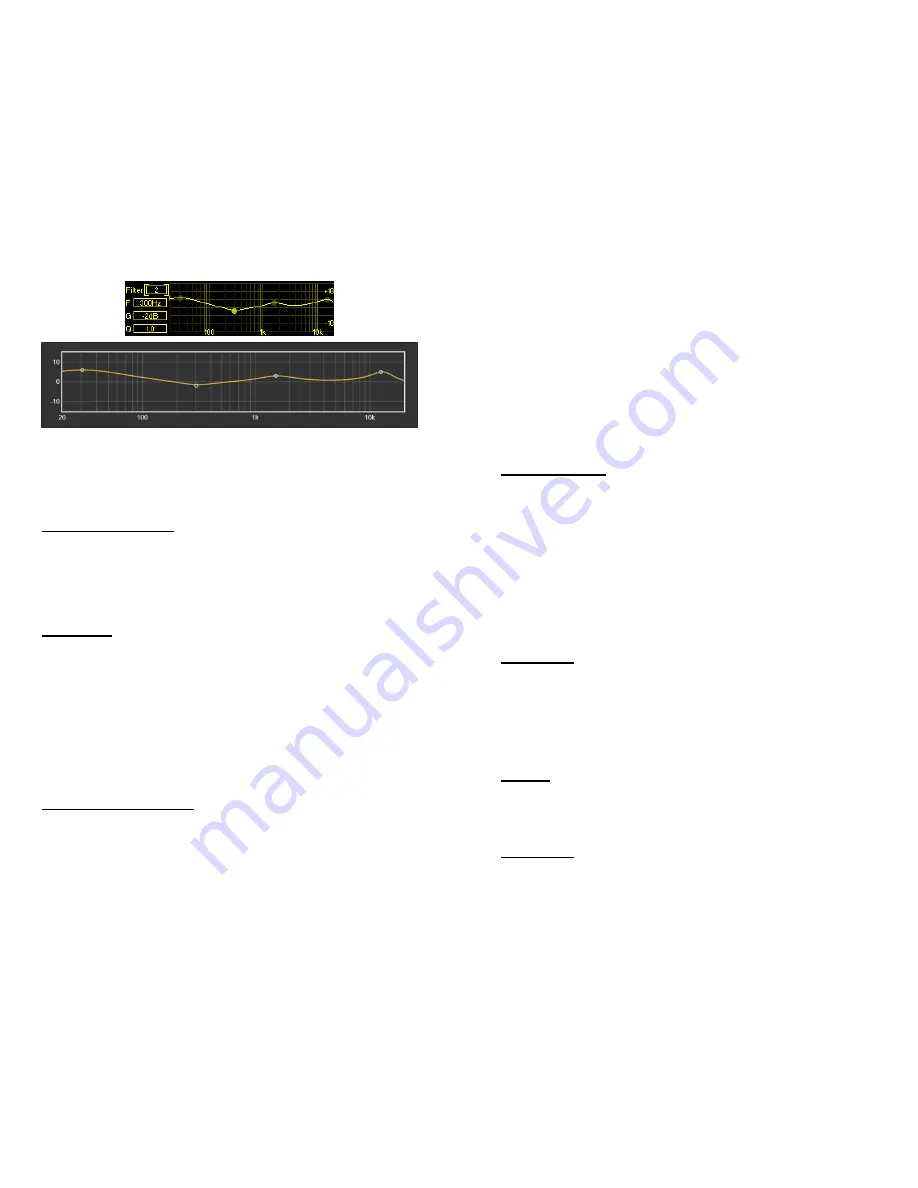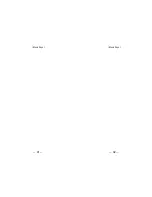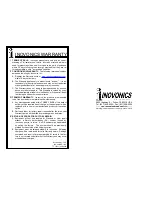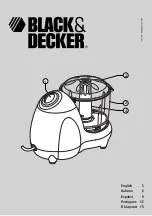
— 19 —
If you are not familiar with parametric EQ, do spend some
time listening to various samples of representative program
material as you put the EQ bank through its paces. Unlike
the more intuitive graphic equalizer, a parametric takes
some getting used to.
Multiband Processing
The multiband processing section of the NOVIA 262 pro-
vides both r.m.s. compression and peak limiting in three
frequency bands. Some multiband setup controls spill-over
from the
Multiband
header into
Limiting
to keep each menu
from getting too cluttered.
Crossovers
Crossovers
are the frequencies that divide the audio spec-
trum into the three processing bands. Filter skirts are se-
cond-order functions offering subtle differences from one
selection to the next. ‘Bass’ frequencies are generally con-
sidered those below 100Hz, so choose the low crossover to
best fit your programming. A high crossover of 2kHz com-
plements the US 75-microsecond FM pre-emphasis charac-
teristic. 3kHz matches the European 50µs curve and may
give a better-balanced midrange in general studio pro-
cessing applications.
‘Master’ and Band Drives
Adjust ‘master’
Drive
to the triband section under
Limiting
/
Triband Drive & RMS/Peak
. This also is where you’ll find the
RMS/Peak
slider that establishes the ratio of r.m.s. to peak
limiting in the three bands. r.m.s G/R (gain reduction) is
shown by the solid or yellow portion of the
LO/MID/HI
G/R
— 20 —
meters, and peak limiting by the floating segment or blue
portion of the bar.
Drive
and
RMS/Peak
will have greatest effect over how ‘busy’
the program sounds. Multiband processing action fills
voids in the program spectrum. r.m.s. control (
0 to –10
) will
give a smoother sound and peak-based control (
0 to +10
) a
greater spectral density.
Under
Multiband/Band Drive
, independent sliders at the input
to each band yield a certain degree of static equalization,
plus an ability to normalize compression and limiting
among the three bands.
Band Uncoupling
With most program material, the mid band contains the
most energy and is thus considered the ‘master’ band of the
multiband section.
Band Uncoupling
allows slaving the action
of the low and high bands to that of the mid band. When
fully coupled (
0% Uncoupling
), mid-band G/R will also reduce
gain in the slaved bands, acting more like a single-band pro-
cessor. The slaved bands will still be able to reduce gain
beyond the midband G/R level as needed, but will not re-
lease to a value less than the G/R level established by the
mid band. Advance
Uncoupling
to get a ‘busier’ multiband
sound.
Bass Punch
This is a bass-enhancement feature that accentuates the ini-
tial impact of drums or the pluck of a bass guitar string.
This is a dynamic function and will have no effect on sus-
tained bass material.
Bass Punch
bypasses the multiband
section, so its action will not be evident in multiband meter-
ing.
Limiting
In addition to the
Triband Drive
and
RMS/Peak
adjustments
above, the
Limiting
submenu has a few more user controls
found under
Final Limiter
.
WB Release
WB Release
establishes a dual release function and will have
the greatest effect over perceived loudness in the program
audio.
Summary of Contents for 262
Page 17: ... 31 Blank Page 32 Blank Page ...




































